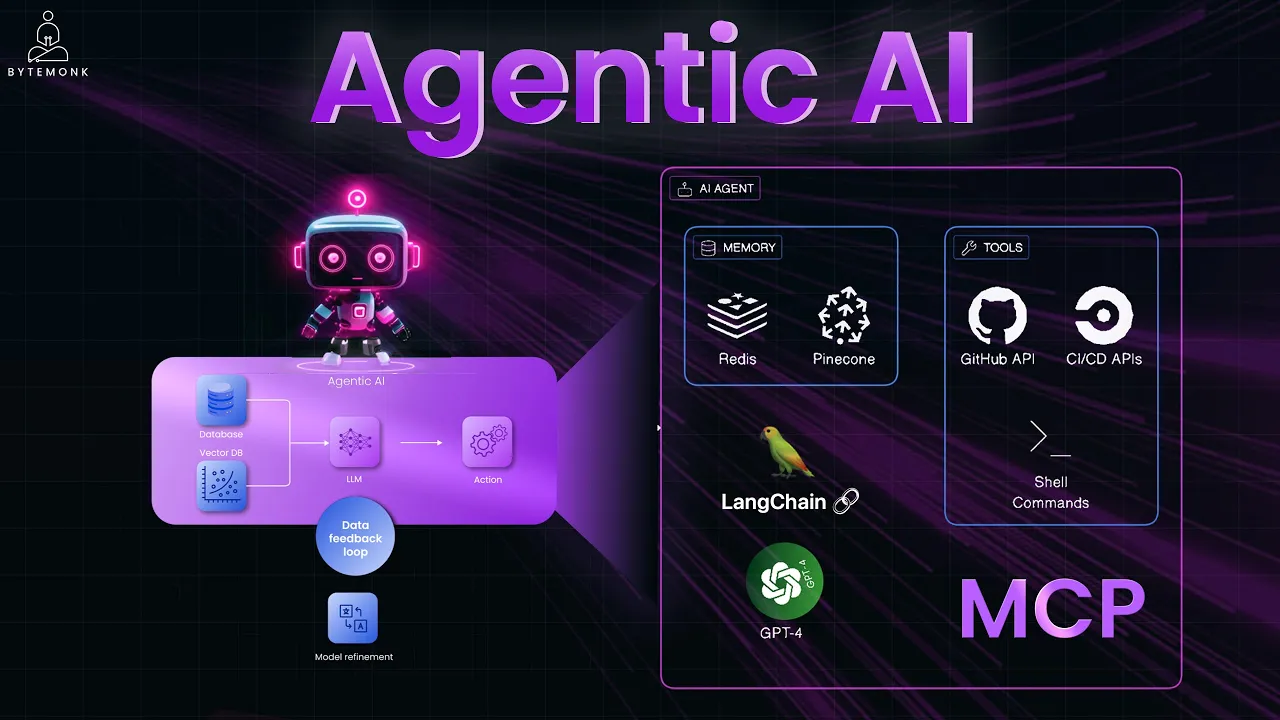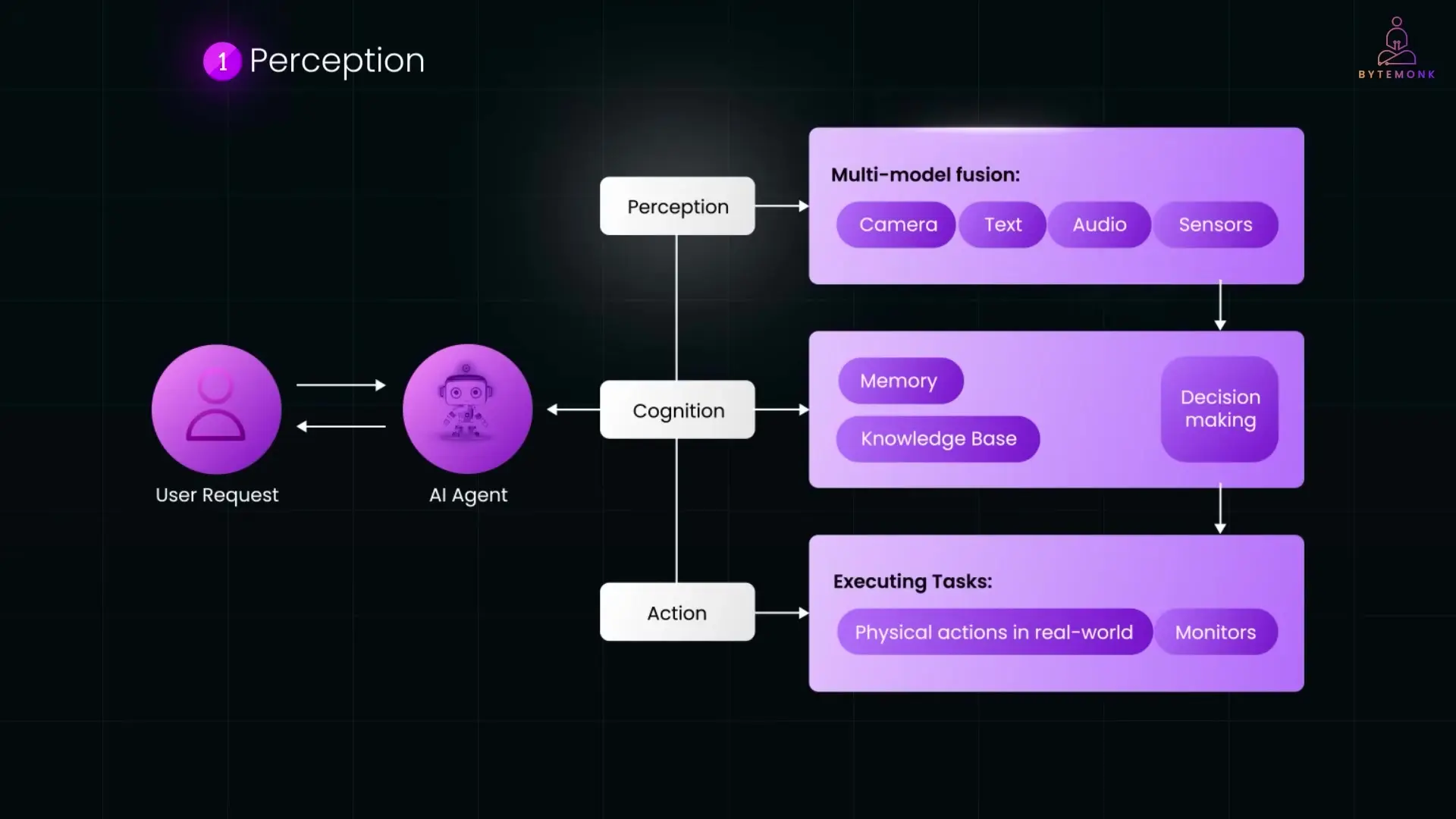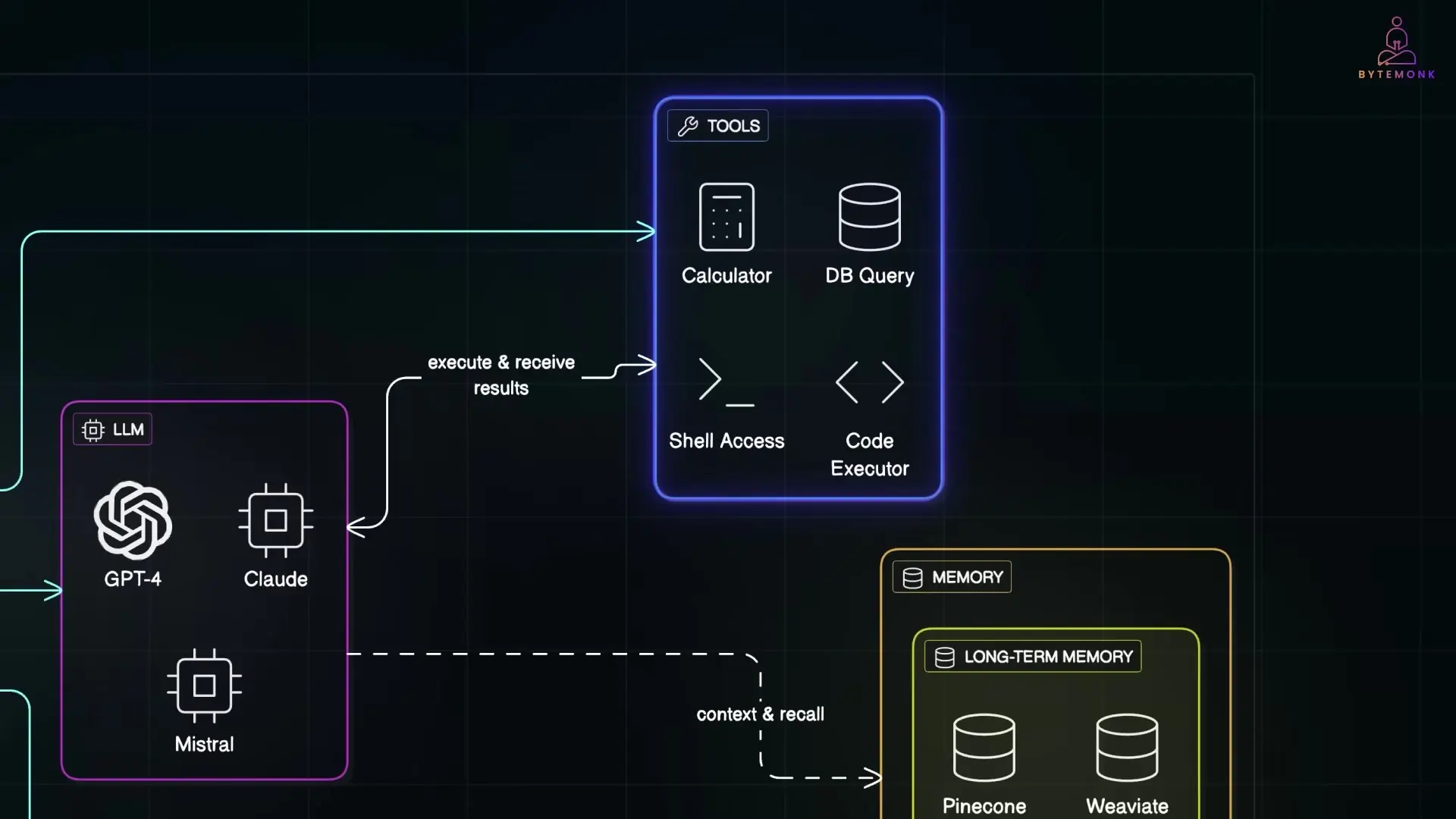
Agentic AI is rapidly transforming the landscape of artificial intelligence, but many are left wondering: is this truly revolutionary technology or simply a rebranding of autonomous AI? This comprehensive guide cuts through the buzzwords to explain what makes agentic AI fundamentally different and why it matters for developers, automation specialists, and anyone building with large language models (LLMs).
What Is Agentic AI?
Unlike traditional AI assistants or chatbots that passively wait for commands, agentic AI takes autonomy to the next level. It doesn't just react to prompts—it actively perceives its environment, reasons through complex problems, takes independent actions, and learns from outcomes. This represents a fundamental shift from reactive to proactive AI systems.
At its core, agentic AI understands goals, determines the necessary steps to achieve them, selects appropriate tools, and adapts its approach as circumstances change. This capability is now moving beyond research laboratories into practical applications with tools like Devon, AutoGPT, LangChain, and OpenAI's Agent SDK enabling AI systems to write code, solve tickets, search the web, and collaborate with minimal human intervention.
The Four-Step Loop of Agentic Systems
Most agentic AI systems operate on a continuous four-step cycle that enables them to function with increasing independence:
- Perception: The agent gathers data from various sources including APIs, databases, user interactions, sensors, or web searches to understand its environment.
- Reasoning: Powered by advanced LLMs like GPT-4, the agent analyzes the situation, breaks down tasks into manageable steps, and plans its approach, sometimes leveraging external knowledge through retrieval augmented generation (RAG).
- Action: The agent executes its plan by making API calls, writing code, sending communications, or running commands, with the ability to self-correct if initial attempts fail.
- Learning: The agent stores experiences and outcomes, gradually improving its performance on similar tasks over time.

Agentic AI Architecture: Under the Hood
The architecture of an agentic AI system revolves around a central LLM that serves as the reasoning engine. This core component connects to databases for gathering context (perception), plans and executes actions through APIs or direct commands, and maintains a data feedback loop that enables continuous learning and improvement.

Importantly, these systems operate within human-defined boundaries—they're goal-driven but constrained by the tools, systems, and data they're permitted to access. This balance of autonomy and control is crucial for practical, safe deployment.
Agentic vs. Traditional AI: A Real-World Comparison
To understand the difference between agentic and traditional AI, consider a code deployment scenario. A conventional AI assistant might help write a deployment script when prompted, but a code deployment agent can independently detect new code pushes, pull repositories, run tests, check for breaking changes, select appropriate deployment pipelines, push code live, and notify team members—all without requiring step-by-step human instructions.
If problems arise, the agent can take corrective actions like rolling back changes, analyzing logs, or creating tickets based on its configuration. This highlights the fundamental distinction: traditional AI is reactive and prompt-dependent, while agentic AI is proactive and goal-oriented, capable of independent action, adaptation, and learning.
Building an AI Agent: The Essential Components
Creating an effective AI agent requires four key components working in harmony:
- Large Language Model (LLM): The agent's brain that handles reasoning, task decomposition, planning, and decision-making. Options include GPT-4, Claude, Mistral, or other capable foundation models.
- Memory Layer: Unlike stateless chatbots, agents need both short-term memory (conversation history) and long-term memory (vector databases like PineCone, Weaviate, or FAISS) to track progress and learn from past experiences.
- Tools and APIs: These enable the agent to interact with external systems and perform real-world actions, from simple calculations to complex operations like database queries, code execution, or system commands.
- Orchestration Framework: The system that coordinates all components, breaking goals into steps, managing memory, routing decisions, and connecting the LLM to appropriate tools.
Popular orchestration frameworks include LangChain for modular agent construction, OpenAI's Agent SDK for tight integration with OpenAI tools, Crew AI for team-based agent coordination, and Microsoft's AutoGen for structured collaborative workflows.
Practical Example: Building a Code Deployment Agent
To illustrate these concepts, consider building an agent that safely deploys code. You might select GPT-4 as your LLM for understanding deployment instructions and planning, Redis or PineCone for tracking deployment history and past failures, and tools like the GitHub API for code management and CI/CD services for deployment execution.

With LangChain or OpenAI's Agent SDK handling orchestration and error management, you could simply instruct the agent to "ship version 1.2 to staging," and it would handle the entire process from repository management to deployment verification without further input.
The Role of MCP in Agentic Systems
The Model Context Protocol (MCP) provides essential structure for complex agentic systems where multiple tools, APIs, and agents need to collaborate effectively. MCP establishes standardized patterns for conversations, tool interactions, and memory access, replacing chaotic prompt exchanges with a clean, modular protocol that helps LLMs maintain context and stay on task.
This standardization is particularly important for multi-step problem-solving that requires reasoning across different tools, memory stores, and environments. For developers building scalable agent systems or integrating them into production workflows, MCP represents not just a convenience but a necessity for reliable operation.
The Future of Agentic AI
Agentic AI represents more than just another technology trend—it signals a fundamental shift in our approach to automation, reasoning, and the capabilities of artificial intelligence. By creating systems that understand goals and independently pursue them, we're opening new possibilities for productivity and innovation across industries.
For software engineers and developers, now is the ideal time to explore this emerging field. Starting with small, well-defined tasks and gradually expanding capabilities can provide valuable insights into the potential of agentic systems. As AI continues to evolve, the ability to design, implement, and manage agentic architectures will become an increasingly valuable skill set.
Getting Started with Agentic AI
If you're interested in experimenting with agentic AI, consider these starting points:
- Begin with LangChain or OpenAI's Agent SDK to understand basic agent workflows
- Identify simple, repetitive tasks in your development process that could benefit from automation
- Experiment with connecting LLMs to basic tools like calculators or web search before moving to more complex integrations
- Study existing agent architectures to understand different approaches to memory, planning, and execution
- Start small and focus on reliable execution of limited tasks before expanding capabilities
Conclusion
Agentic AI represents the next evolution in artificial intelligence—systems that don't just respond to queries but proactively work toward goals with minimal human intervention. By understanding the four-step loop of perception, reasoning, action, and learning, developers can begin to harness these capabilities for practical applications across industries.
As frameworks mature and best practices emerge, we're likely to see agentic systems handling increasingly complex workflows in software development, customer service, data analysis, and beyond. The future of AI isn't just conversational—it's agentic, and the possibilities are just beginning to unfold.
Let's Watch!
Agentic AI Explained: Beyond Autonomous Systems
Ready to enhance your neural network?
Access our quantum knowledge cores and upgrade your programming abilities.
Initialize Training Sequence